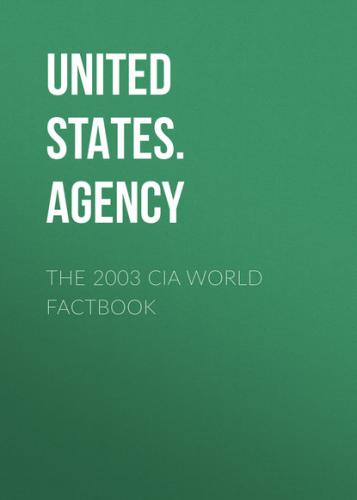Elevation extremes:
lowest point: Pacific Ocean 0 m
highest point: unnamed location 3 m
Natural resources:
guano (deposits worked until late 1800s), terrestrial and aquatic
wildlife
Land use: arable land: 0% permanent crops: 0% other: 100% (1998 est.)
Irrigated land:
0 sq km (1998 est.)
Natural hazards:
the narrow fringing reef surrounding the island can be a maritime
hazard
Environment - current issues:
no natural fresh water resources
Geography - note:
almost totally covered with grasses, prostrate vines, and
low-growing shrubs; small area of trees in the center; primarily a
nesting, roosting, and foraging habitat for seabirds, shorebirds,
and marine wildlife
People Howland Island
Population:
uninhabited
note: American civilians evacuated in 1942 after Japanese air and
naval attacks during World War II; occupied by US military during
World War II, but abandoned after the war; public entry is by
special-use permit from US Fish and Wildlife Service only and
generally restricted to scientists and educators; visited annually
by US Fish and Wildlife Service (July 2003 est.)
Government Howland Island
Country name: conventional long form: none conventional short form: Howland Island
Dependency status:
unincorporated territory of the US; administered from Washington,
DC, by the Fish and Wildlife Service of the US Department of the
Interior as part of the National Wildlife Refuge system
Legal system:
the laws of the US, where applicable, apply
Flag description:
the flag of the US is used
Economy Howland Island
Economy - overview: no economic activity
Transportation Howland Island
Waterways:
none
Ports and harbors:
none; offshore anchorage only; note - there is one small boat
landing area along the middle of the west coast
Airports:
airstrip constructed in 1937 for scheduled refueling stop on the
round-the-world flight of Amelia EARHART and Fred NOONAN - they left
Lae, New Guinea, for Howland Island, but were never seen again; the
airstrip is no longer serviceable (2002)
Transportation - note:
Earhart Light is a day beacon near the middle of the west coast
that was partially destroyed during World War II, but has since been
rebuilt; named in memory of famed aviatrix Amelia EARHART
Military Howland Island
Military - note:
defense is the responsibility of the US; visited annually by the US
Coast Guard
Transnational Issues Howland Island
Disputes - international: none
This page was last updated on 18 December, 2003
======================================================================
@Hungary
Introduction Hungary
Background:
Hungary was part of the polyglot Austro-Hungarian Empire, which
collapsed during World War I. The country fell under Communist rule
following World War II. In 1956, a revolt and announced withdrawal
from the Warsaw Pact were met with a massive military intervention
by Moscow. Under the leadership of Janos KADAR in 1968, Hungary
began liberalizing its economy, introducing so-called "goulash
Communism." Hungary held its first multiparty elections in 1990 and
initiated a free market economy. It joined NATO in 1999 and is
scheduled to accede to the EU along with nine other states on 1 May
2004. In an April 2003 referendum, 84 percent voted in favor of
joining the EU.
Geography Hungary
Location:
Central Europe, northwest of Romania
Geographic coordinates:
47 00 N, 20 00 E
Map references:
Europe
Area:
total: 93,030 sq km
water: 690 sq km
land: 92,340 sq km
Area - comparative:
slightly smaller than Indiana
Land boundaries:
total: 2,171 km
border countries: Austria 366 km, Croatia 329 km, Romania 443 km,
Serbia and Montenegro 151 km, Slovakia 677 km, Slovenia 102 km,
Ukraine 103 km
Coastline:
0 km (landlocked)
Maritime claims:
none (landlocked)
Climate:
temperate; cold, cloudy, humid winters; warm summers
Terrain:
mostly flat to rolling plains; hills and low mountains on the
Slovakian border
Elevation extremes:
lowest point: Tisza River 78 m
highest point: Kekes 1,014 m
Natural resources:
bauxite, coal, natural gas, fertile soils, arable land
Land use:
arable land: 52.2%
other: 45.34% (1998 est.)
permanent crops: 2.46%
Irrigated land:
2,100 sq km (1998 est.)
Environment - current issues: the approximation of Hungary's standards in waste management, energy efficiency, and air, soil, and water pollution with environmental requirements for EU accession will require large investments
Environment - international agreements:
party to: Air Pollution, Air Pollution-Nitrogen Oxides, Air
Pollution-Sulphur 85, Air Pollution-Volatile Organic Compounds,
Antarctic Treaty, Biodiversity, Climate Change, Desertification,
